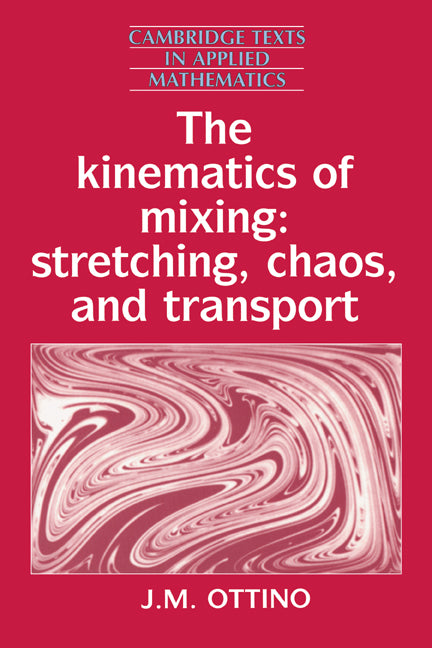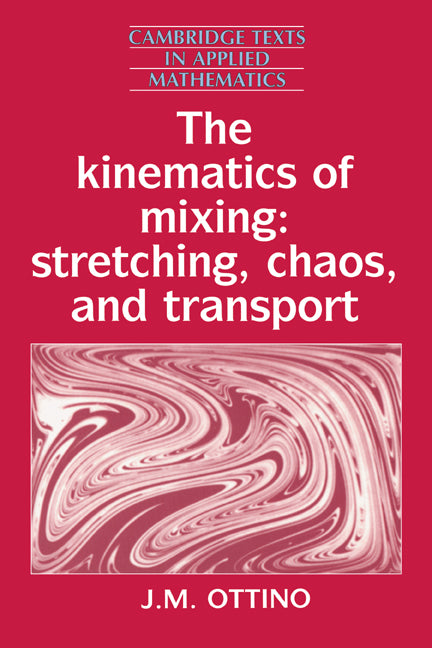Freshly Printed - allow 8 days lead
Couldn't load pickup availability
The Kinematics of Mixing
Stretching, Chaos, and Transport
This is the first book to present a unified treatment of the mixing of fluids from a kinematical viewpoint.
J. M. Ottino (Author)
9780521368780, Cambridge University Press
Paperback, published 25 May 1989
396 pages
22.9 x 15.4 x 2.6 cm, 0.58 kg
"...a well-organized and thorough treatment of a subject of substantial current research interest. It would be a good text for a specialized graduate course on the kinematic approach to mixing (probably in Chemical Engineering departments, where most of the research in this area occurs), or to bring new workers in the field up to speed." John de Bruyn, Physics in Canada
In spite of its universality, mixing is poorly understood and generally speaking, mixing problems are attacked on a case-by-case basis. This is the first book to present a unified treatment of the mixing of fluids from a kinematical viewpoint. The author's aim is to provide a conceptually clear basis from which to launch analysis and to facilitate an understanding of the numerous mixing problems encountered in nature and technology. After presenting the necessary background in kinematics and fluid dynamics, Professor Ottino considers various examples of dealing with necessary background in dynamical systems and chaos. The book assumes little previous knowledge of fluid dynamics and dynamical systems and can be used as a textbook by final-year undergraduates, graduate students and researchers in applied mathematics, engineering science, geophysics and physics who have an interest in fluid dynamics, continuum mechanics and dynamical systems. It is profusely illustrated in colour, with many line diagrams and half-tones. Systems which illustrate the most important concepts, many exercises and examples are included.
Preface
Acknowledgments
1. Introduction
2. Flow, trajectories and deformation
3. Conservation equations, change of frame, and vorticity
4. Computation of stretching and efficiency
5. Chaos in dynamical systems
6. Chaos in Hamiltonian systems
7. Mixing and chaos in two-dimensional time-periodic flows
8. Mixing and chaos in three-dimensional and open flows
9. Epilogue: diffusion and reaction in lamellar structures and microstructures in chaotic flows
Appendix
List of frequently used symbols
References
Author index
Subject index.
Subject Areas: Applied mathematics [PBW]


